We can find characteristics of Lord Shiva described in numerous texts. The Srimad-Bhagavatam (4.2.2), for example, states that Lord Shiva is the spiritual master of the entire world. He is a peaceful personality, free from enmity, always satisfied in himself. He is the greatest among all the demigods. He is the spiritual master of the world by showing how to worship the Supreme. He is considered the best of all devotees. Therefore, he has his own spiritual line or sampradaya called the Rudra-sampradaya that comes directly from him. These days it is also found in the Vishnusvami-sampradaya, or the Vallabha-sampradaya.
Shiva is also described as the most powerful, second only to Lord Vishnu. (Srimad-Bhagavatam 4.24.22-28) In this way, he is not the Supreme, but is almost as powerful. Although he has nothing to attain in this material world, he is always engaged for the benefit of everyone in this universe, and is accompanied by his material and dangerous energies like goddess Kali and goddess Durga. Sometimes we see pictures of a fierce form of Kali standing with one foot on the body of Shiva. This is because Shiva sometimes has to lie down in front of her to pacify her from killing all the demoniac people in the world. In this way, Shiva controls the material energy. Lord Shiva is also in control of the destructive energy, tamo-guna, the mode of darkness, and is assisted by Kali and Durga in this purpose.
It is also said that Shiva's drum represents srishti, the creation; the abhaya hand (giving blessings) represents sthiti, or preservation; his foot that presses down symbolizes tirobhava, or the veiling effect; and the uplifted foot means blessings (anugraha), especially toward seeing through the veil of illusion caused by ego. When he is shown with an axe, it represents samhara, destruction. Shiva worshipers are Shaivites. Much more can be learned about Lord Shiva in our ebook on this website called, Shiva and Durga: Their Real Identity.
Related Posts


-
 Vaishno Devi Temple,Katra
Vaishno Devi Temple,Katra
Vaishno Devi Temple is the most-sought after pilgrimage of the Hindus. Located at Trikoot Parvat, Mata Vaishno Mandir is the holiest shrine of India and it is famous all over the World. The temple is accessible by a journey of 13 kms from Katra. Katra is a small town that falls in Udhampur district of Jammu. From Jammu, Katra lies at a distance of 50 kms.
-
 Sri Kodanda Rama Swamy Temple, Vontimitta
Sri Kodanda Rama Swamy Temple, Vontimitta
Vontimitta Sri Kodanda rama Swamy temple is a famous Hindu temple in Andhra Pradesh state is dedicated to Lord Rama. The temple is present in Vontimitta town of Rajampet taluk in YSR Kadapa District.
-
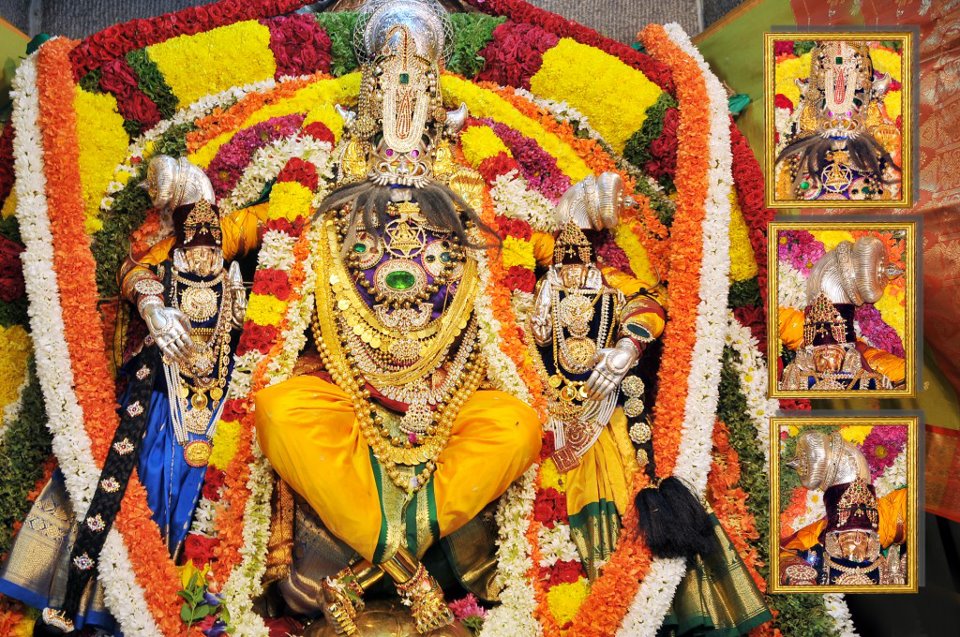 Khadri Lakshmi Narasimha Swamy Temple, Kadiri
Khadri Lakshmi Narasimha Swamy Temple, Kadiri
Kadiri Lakshmi Narasimha Swamy Temple is located in the southeastern part of Anantapur district in Andhra Pradesh, India. Lord Narasimha at Kadiri is swayambhu emerging from the roots of Khadri tree. He appears here as Ashta Bahu Narasimha (having eight hands) tearing Hiranyakasipu. We can see Prahlada standing beside him with folded hands.
-
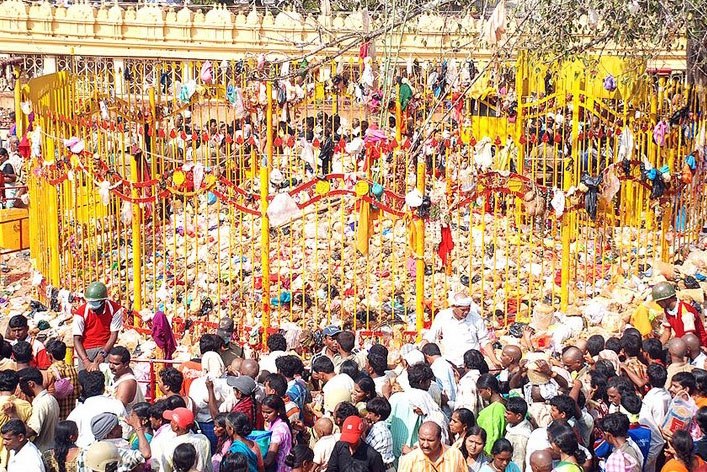 Sammakka Saralamma Jatara, Medaram
Sammakka Saralamma Jatara, Medaram
Sammakka Saralamma Jatara or Medaram Jatara is a tribal festival of honouring the goddesses celebrated in the state of Telangana, India. The Jatara begins at Medaram in Tadvai Mandal in Warangal district.Medaram is a remote place in the Eturnagaram Wildlife Sanctuary, a part of Dandakaranya, the largest surviving forest belt in the Deccan.
-
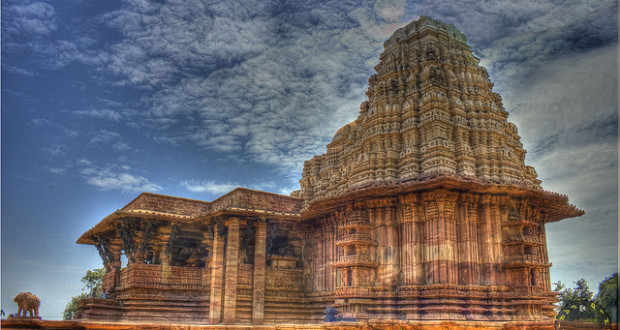 Ramalingeswara Temple, Warangal
Ramalingeswara Temple, Warangal
The Ramappa Temple, also known as Ramalingeswara temple is located in the Palampet village at a distance of about 77 km from Warangal. The temple is another example of Kakatiya Dynasty. This is one of the temples which was named after its chief architect. The temple is dedicated to Lord Shiva and the architecture of this temple is similar to the famous Ghanpur Group of Temples of Warangal itself. The temple is a master piece of Kakatiyan architecture and everyone must visit to get a glimpse in the life of Kakatiya people.
-
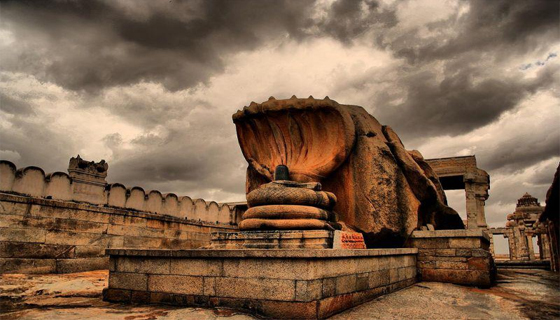 Lepakshi Temple, Lepakshi
Lepakshi Temple, Lepakshi
Lepakshi is a village in the Anantapur District of Andhra Pradesh, India. It is located 15 km (9.3 mi) east of Hindupur and approximately 120 km (75 mi) north of Bangalore. Lepakshi is culturally and archaeologically significant as it is the location of shrines dedicated to Shiva, Vishnu and Veerabhadra which were built during the Vijayanagara Kings' period (1336-1646).
-
 Ram Mandir, Ayodhya
Ram Mandir, Ayodhya
Ayodhya is the place where Lord Sri Ram was born and ruled for many years (after killing Ravana). There was an existing temple built in this city, proofs of which have been found during ASI excavation. More than the physical temple and exact spot, the important point is the association of this city (town) with Lord Sri Rama, the most important incarnation of Lord Vishnu.
-
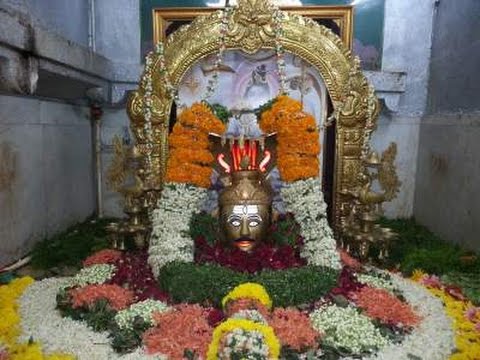 Siddeshwara Swamy Temple, Warangal
Siddeshwara Swamy Temple, Warangal
Siddeshwara temple has a rich ancient history associated with it. The temple was built in 3rd century A.D. Even though built in a time period when life was totally different from today's world, people fascinate about the architecture of this temple a lot.
-
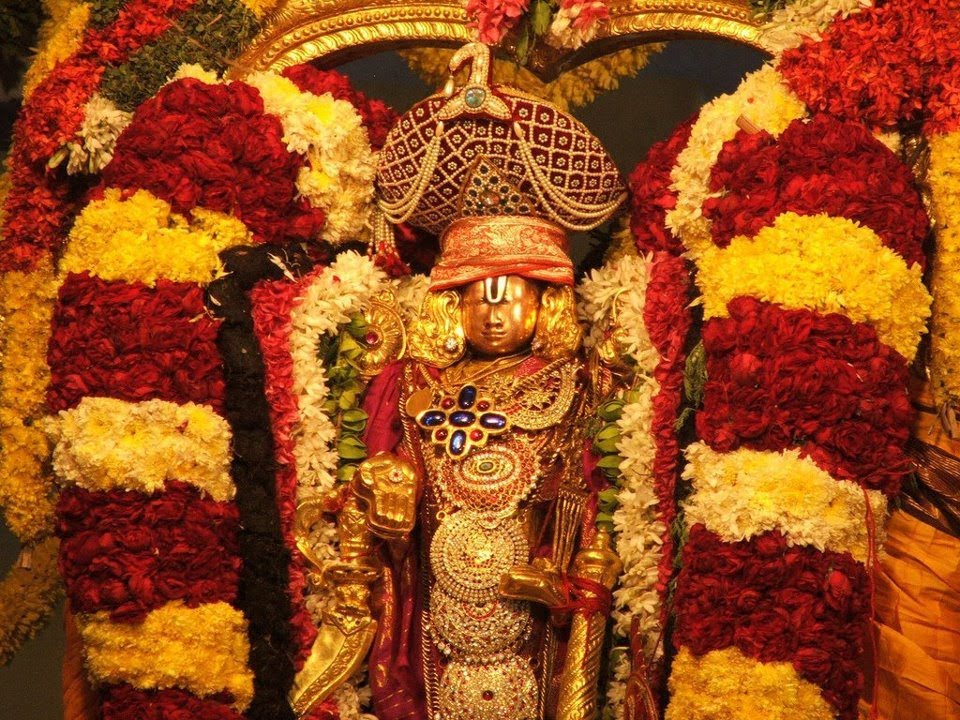 Sri Kakuleswara Swamy Temple, Srikakulam
Sri Kakuleswara Swamy Temple, Srikakulam
Srikakulam has a rich history and is the first capital of the Andhra Kingdom. The ancient Srikakuleswara Swamy temple is located on the banks of River Krishna and is considered to be the 57th of 108 Divya Desams, holiest of shrines dedicated to Lord Vishnu, by Vasihnavaites. The temple has a rich cultural and historical legacy and is one of the oldest temples in the south. Great poets like Srinatha Kavi Sarvabhoumudu, Kasuala Purushottama and Narayanatheertha, the composer of Sri Krishna Leela Tharangini praised the temple in their works. The temple is located in the mandal of Ghantasala, which is a popular Buddhist center.
-
 Sri Mallikharjuna Swamy Temple, Komaravelli
Sri Mallikharjuna Swamy Temple, Komaravelli
The Lord is believed to have manifested as Sri Mallikharjuna Swamy and made Komaravelli his abode in the eleventh century CE. The Lord married Golla Ketamma from the Yadava community and Medalamma from the Linga Balija community, which explains the association of those communities with the worship services of the Lord.